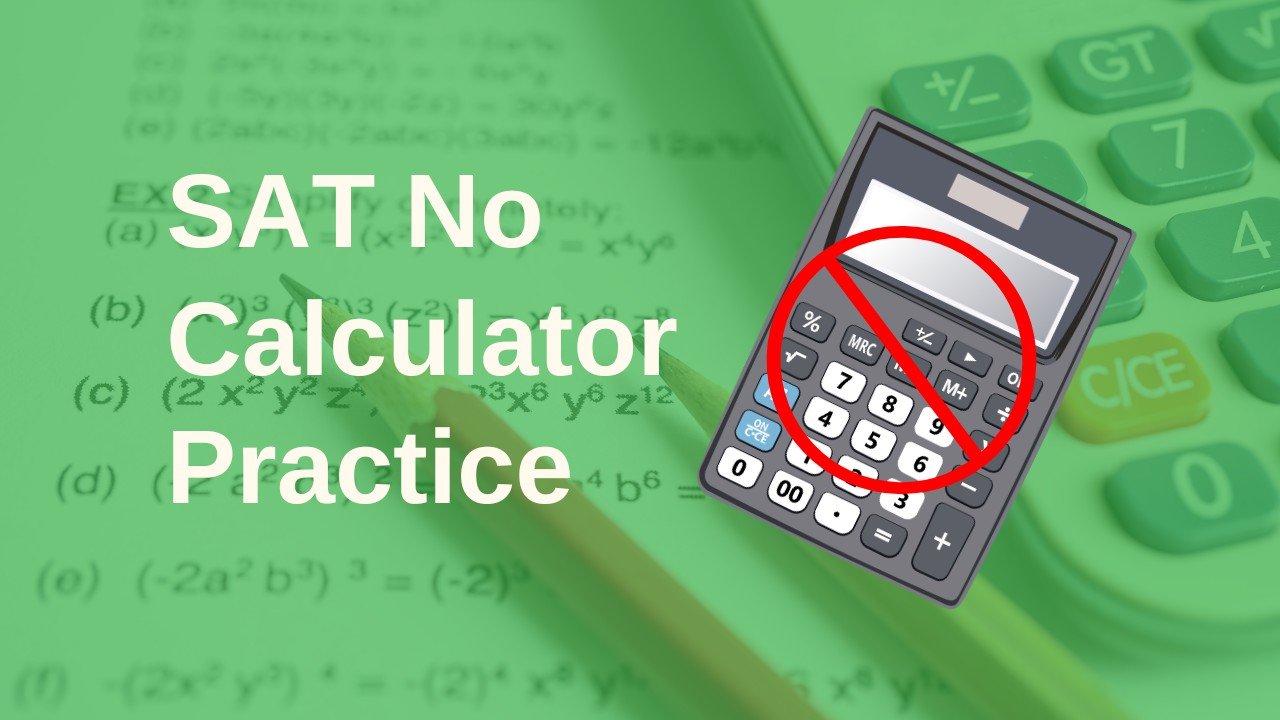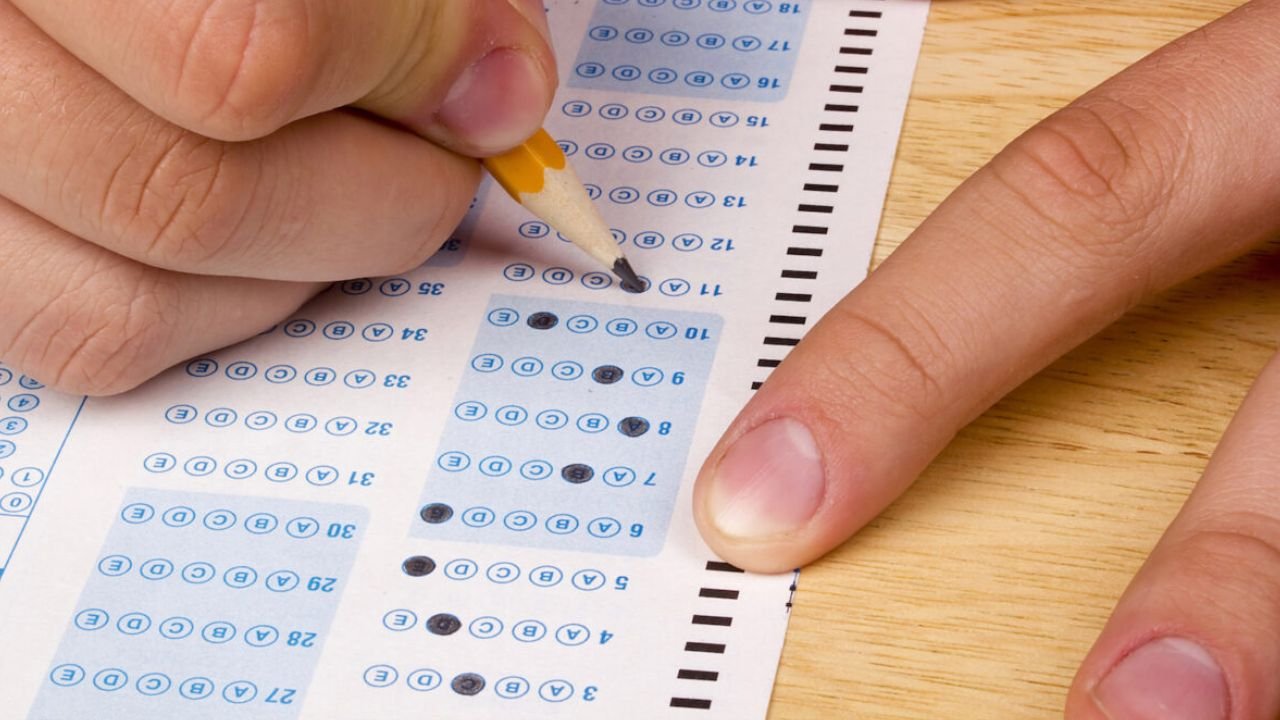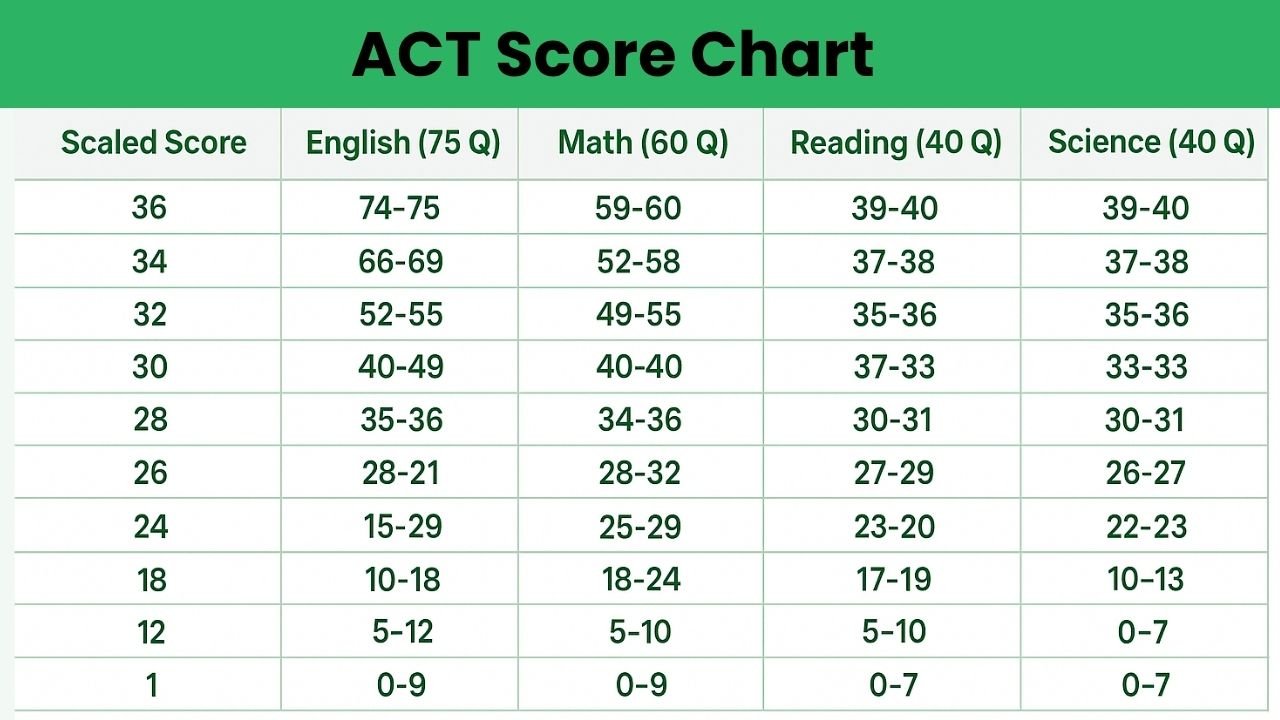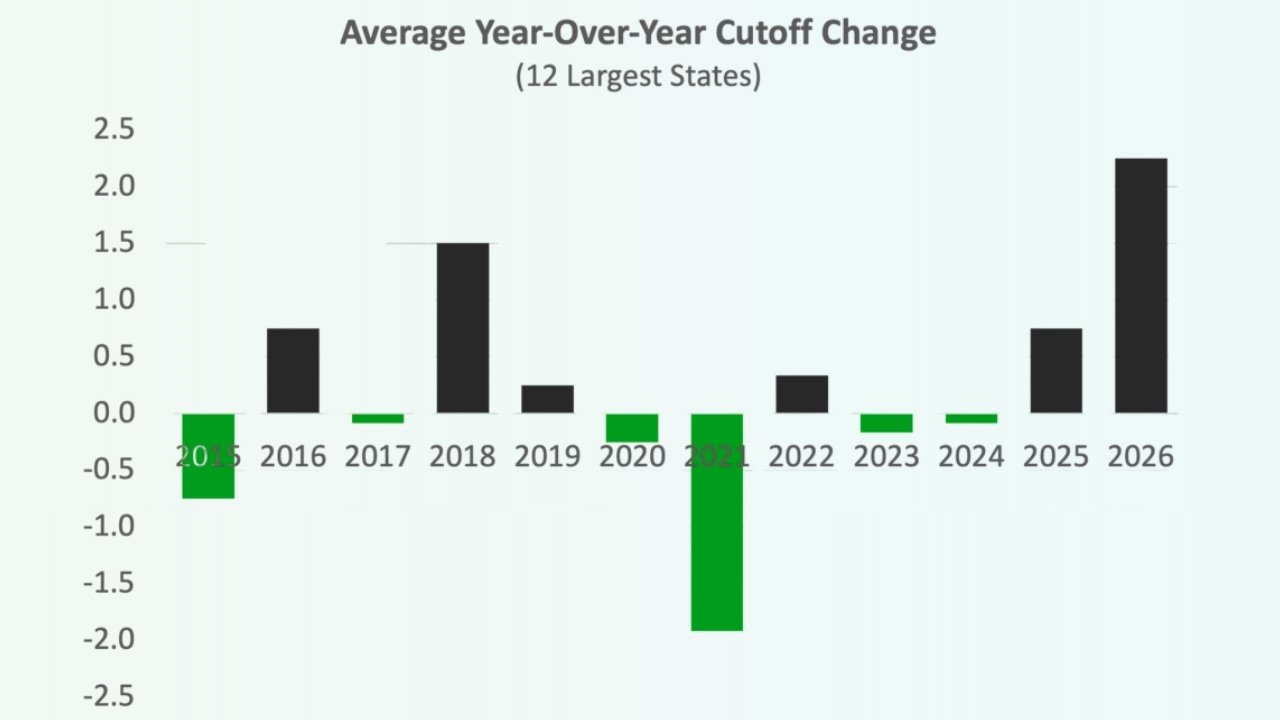SAT no calculator practice helps build mathematical independence. The section of the SAT math test by the College Board checks your logical reasoning skills and accuracy under a strict time limit. It tests fluency, structure, and control, and not speed.
You will have 20 questions in 25 minutes, which are divided into linear equations, expressions, ratios, and geometry. You will not have any digital assistance. Instead, you will have to focus on logic, simplifying, comparing, and recognizing relationships between quantities. Every question has a structure. When you see how values depend on each other, the solution becomes visible.
Understanding the SAT No Calculator Section
This section comes in the math portion of the SAT. You get to solve 15 multiple-choice questions and 5 grid-in questions. You have to write your own answers. These questions analyze your conceptual reasoning. You should be able to solve and simplify without heavy computation. You can solve each question through logic instead of large-scale arithmetic. The No Calculator section tests your sense of balance in numbers: how you move terms, isolate variables, and maintain equality.
Category | Focus | Example |
Algebra | Linear and quadratic equations | Solve 3x+4=193x + 4 = 193x+4=19 |
Arithmetic | Fractions, ratios, and proportions | Simplify \( \frac{3}{4} = \frac{x}{12} \) |
Geometry | Angles, area, and perimeter | Find missing sides using \( A = \frac{1}{2}bh \) |
Data and Graphs | Interpreting trends | Read relationships from tables or charts |
Every question connects small steps. Each value depends on another. You get clarity by tracing the dependency.
SAT No Calculator Practice For Algebra
SAT Algerba questions test the direct manipulation.
Example:
If
\[
5x – 3 = 2x + 9
\Rightarrow 5x – 2x = 9 + 3
\Rightarrow 3x = 12
\Rightarrow x = 4
\]
Each step to solve this equation will depend on equality. Students will need to maintain the balance from left to right. Some questions may ask you to find the slope or the intercept from equations. The other requires you to solve a system:
\[
\begin{cases}
x + y = 8 \\
2x – y = 4
\end{cases}
\]
Adding both equations:
\[
3x = 12 \Rightarrow x = 4
\]
Substitute \( x = 4 \) into \( x + y = 8 \):
\[
4 + y = 8 \Rightarrow y = 4
\]
These problems test the fluency and ability to connect one change to another without breaking logical structure.
Working With Numbers and Proportions
Number-based questions test reasoning through structure rather than computation.
Example:
A recipe calls for 4 cups of flour for 8 servings. How many cups for 12 servings?
You keep proportion:
\[
\frac{4}{8} = \frac{x}{12}
\]
\[
8x = 4 \times 12
\Rightarrow 8x = 48
\Rightarrow x = 6
\]
So, 6 cups of flour are needed for 12 servings.
Here, the ratio forms a dependency chain between quantities.
Other questions involve percent change or averages.
If a price increases from 80 to 100, what is the percent change?
\[
\text{Percent Change} = \frac{100 – 80}{80} \times 100 = \frac{20}{80} \times 100 = 25\%
\]
The key is not to memorize a formula but to track relationships.
Geometry Reasoning Without Tools
Geometry questions test spatial logic. You calculate using structure, not measurement.
Example:
A triangle has a base of 6 and a height of 8.
\[
A = \frac{1}{2} b h = 24
\]
\[
b h = 48
\]
\[
h = \frac{48}{b}
\]
For example, if b = 8:
\[
h = \frac{48}{8} = 6
\]
So the base is 8 and the height is 6.
Or if a triangle at right has legs 3 and 4. You recognize the 3-4-5 relationship. This gives you the hypotenuse. You can solve faster by recalling such geometric dependencies. Common geometry entities on the SAT include:
Circles:
\[
\text{Area: } A = \pi r^2
\]
\[
\text{Circumference: } C = 2 \pi r
\]
Example:
If r = 5:
\[
r = 5
\]
\[
A = \pi r^2 = \pi (5)^2 = 25\pi
\]
\[
C = 2 \pi r = 2 \pi (5) = 10\pi
\]
Rectangles:
\[
\text{Area of a rectangle: } A = l \times w
\]
Example:
If 𝑙 = 10 and 𝑤 = 5:
\[
l = 10, \quad w = 5
\]
\[
A = l \times w = 10 \times 5 = 50
\]
Triangles:
\[
\text{Area of a triangle: } A = \frac{1}{2} b h
\]
Example:
If 𝑏 = 6 and ℎ = 8:
\[
b = 6, \quad h = 8
\]
\[
A = \frac{1}{2} b h = \frac{1}{2} \times 6 \times 8 = 24
\]
Angles:
Complementary (sum 90°), supplementary (sum 180°).
Mental Math and Estimation
This section focuses on clear number sense.
For example:
\[
\text{If you see } 12.5\% \text{ of } 80, \text{ convert } 12.5\% \text{ to a fraction:}
\]
\[
12.5\% = \frac{1}{8}
\]
\[
\frac{1}{8} \times 80 = 10
\]
\[
\text{So, } 12.5\% \text{ of } 80 = 10
\]
If a question shows large numbers, look for simplification.
You rarely look for full computation. Reasoning often cancels terms.
Example:
\[
\frac{60}{15} \times \frac{5}{2} = 4 \times 2.5 = 10
\]
Having mental shortcuts saves time. The accuracy depends on the structure. Each value you simplify should maintain logical equality.
SAT Math Practice Test PDF With Answer
The SAT Math Practice Test PDF with Answers includes answer keys and explanations, and helps track performance.
SAT Practice Test 4: Questions | Answers | Answer Explanations
SAT Practice Test 5: Questions | Answers | Answer Explanations
SAT Practice Test 6: Questions | Answers | Answer Explanations
SAT Practice Test 7: Questions | Answers | Answer Explanations
SAT Practice Test 8: Questions | Answers | Answer Explanations
SAT Practice Test 9: Questions | Answers | Answer Explanations
SAT Practice Test 10: Questions | Answers | Answer Explanations
What Does The No Calculator Section Really Test?
The No calculator section does not measure memory. It measures control over reasoning. It tests whether you can:
- Rearrange equations logically.
- Simplify expressions cleanly.
- Recognize patterns in numbers.
- Estimate accurately without external aid.
- Interpret relationships from written context.
In simple words, it assesses whether you can think mathematically. The SAT Math no calculator section forms a clear contrast with the calculator section. There, speed and data interpretation matter more. Here, structure, fluency, and logic matter most.
What Are The Strategies for SAT No Calculator Practice
SAT No calculator practice can be hard from the start, but with focused attention, you can prepare better.
- Understanding before solving matters. You should identify what the question asks and what changes.
- Simply from the start. Cancel or reduce before multiplying.
- Use substitution and replace abstract variables with simple numbers if it clarifies logic.
- Work systematically. Line up terms to reduce error.
- Verify by logic. Plug solutions back in if time allows.
For the No calculator section, confidence grows from control. While solving, each step should connect directly to the meaning.
Your success story begins with us!
We are here for you! Schedule a call with our consultant for personalized advice on achieving your learning goals

Common Mistakes to Avoid With SAT No Calculator Practice
- Rushing into computation before isolating the structure.
- Forgetting sign changes while rearranging.
- Misinterpreting inequality directions when multiplying by negatives.
- Mixing units (feet with inches, minutes with hours).
- Ignoring context clues in word problems.
Focus on these mistakes in SAT prep and the SAT practice test. Breaking the logical chain between numbers. Strengthen that chain, and errors vanish.
FAQs About SAT No Calculator Practice
Let’s answer your questions about SAT No calculator practice.
How many questions are in the SAT No Calculator section?
There are 20 questions in total: 15 multiple-choice and 5 grid-in responses.
How long do you have for the No Calculator section?
You have 25 minutes to complete it.
What topics appear most often?
Linear equations, proportions, quadratic equations, geometry, and data interpretation.
Can I use formulas on the No Calculator section?
Yes. The SAT provides a formula sheet, but success comes from understanding structure rather than recalling formulas.
How to prepare for this section?
Practice reasoning without using any tool. Focus on simplifying equations and connecting values logically rather than computing large numbers.
Bottom Line
The SAT No Calculator practice helps develop clear and grounded reasoning. You need to solve through structure instead of shortcuts. You see how one value affects another and move step by step toward balance. To succeed in this section is not just about arithmetic; it is about attention and clarity. You can train your mind to see logic where others see numbers. That is the skill that every test and every life decision rewards.
New Digital SAT Math Workbook
New Digital SAT Math Workbook, covering all Digital SAT Math topics with adaptive modules!












